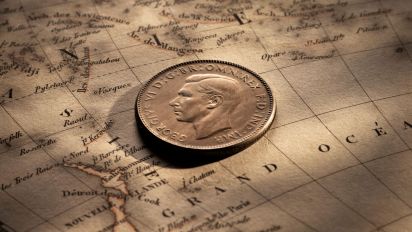1946 Pattern Florin, struck in cupro-nickel and the only example held in private hands



When we want to get into the nitty-gritty of a coin, its historical place and importance, we have several 'go-to' sources for information.
Our first 'port of call', however, is always esteemed numismatic author, Greg McDonald. (Who this year celebrates the 40th anniversary of the release of his first book.)
In his upcoming and yet to be released book, the 'Essential Reference to Australian Coins and Banknotes', Greg has devoted three solid pages to the silver crisis of 1945 and 1946, a financial crunch that would eventually lead to Australia’s recoinage program.
Crazy economic times have an impact on Governments and a nation’s currency requirements and more often than not have produced numismatic super-stars. Coins that have held the fascination of collectors for decades.
The Depression of 1930 and Australia’s favourite copper penny. The silver crisis of 1920 and the 1920 Star Florin and 1920 Star Shilling. And the silver crisis of 1945 and 1946 and the 1945 Penny, Australia’s rarest penny. And this 1946 cupro nickel florin, an experimental strike in an alternative metal and the the only example held by a private collector.
The Melbourne Mint produced four florins in cupro nickel. All four were minted without adjustment to the presses and are therefore weakly struck. The work was considered so sensitive that all were archived.
Australia was able to weather the storm concerning the silver crisis of 1920. The nation was not so fortunate in 1945 and 1946 when the price of silver was booming.
Late in 1945, the Deputy Master of the Melbourne Mint was asked to supply data on a projected alteration of the alloy of Australia's silver coinage. Four alternatives were considered and the first option eventually decided on:
- The British (50%) quarternary alloy of 50% silver, 40% copper, 5% nickel, 5% zinc.
- Silver/copper alloys of varying percentages from 80% to 66.66% silver
- Pure nickel
- Other alloys including cupro nickel
Greg McDonald provides an interesting insight to the workings of Government and the Mint.
Legislation governing the new alloys had to be passed and despite having a currency crisis early in 1946 the appropriate legislation was not in force until 10 June 1947.
A problem however occurred in 1946 for Treasury ran out of florins with the banks screaming for more coins! And even though the mint had been producing florins in the new alloy, they could not be released as the legislation had not been passed through Parliament.
The mint therefore dusted off the '1945' dies and, at an inordinate cost, an additional 3.7 million florins were struck in sterling silver. Dated '1945'. What made the episode quite comical was that while the Mint was forced to backdate florins and strike them in the more expensive silver alloy, the mint was also in the process of melting down 4.3 million sterling 1945 shillings as no one wanted them!
The year 1946 heralded in a new order. All Australian florins, shillings, sixpence and threepences were made of the reduced silver quarternary alloy.
© Copyright: Coinworks